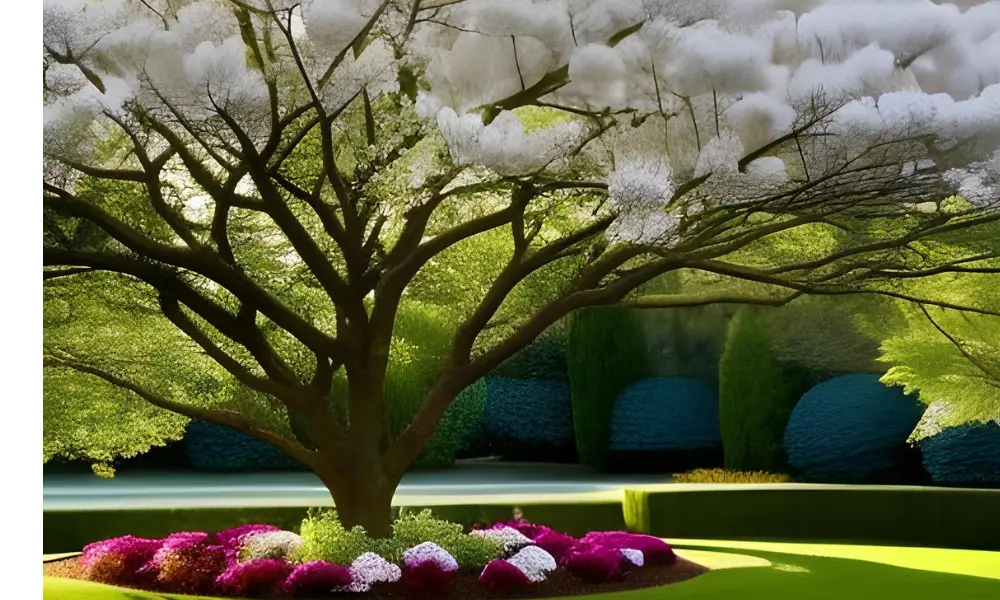Now that spring is in the air, you may be thinking about adding a tree to your yard. If so, you might want to consider a magnolia tree. These trees are beautiful and can add value to your home, but there are also some potential drawbacks that you should be aware of before making your final decision.
In this blog post, we’ll take a closer look at the pros and cons of magnolia trees so that you can make an informed decision about whether or not this is the right tree for your needs.
There are many different types of trees that you can choose from when you are looking to add some greenery to your yard. One type of tree that you may come across is the magnolia tree. These trees are known for their large and beautiful flowers.
But before you go out and buy a magnolia tree, it’s important to weigh the pros and cons to see if this is the right type of tree for you. Here are some of the pros of owning a magnolia tree:
- The Flowers: This is probably the most well-known benefit of owning a magnolia tree – gorgeous flowers. The blooms on these trees are absolutely stunning and range in color from white to pink to purple. They have a very sweet smell as well, which can make your yard feel even more inviting during springtime.
- Shade Provider Another pro of having a magnolia tree is that it can provide much-needed shade during hot summer days. The leaves on these trees are large and dense, which makes them great at blocking out the sun’s rays. This can be a relief if your yard gets direct sunlight for most of the day since it will help keep things cooler.
What are the Cons of Magnolia Trees?
There are a few cons to having magnolia trees on your property. First, they can be messy as the blooms fall and decompose on the ground. Second, the roots of these trees can damage sidewalks, driveways, and even the foundation of your house if they are not properly maintained.
Finally, because magnolia trees are so large, they can block out sunlight from reaching your home which can make it hotter in the summer months.

Where Should You Not Plant a Magnolia Tree?
If you live in an area with very cold winters, it’s best not to plant a magnolia tree. The tree won’t be able to survive if the temperature drops below -15 degrees Fahrenheit. Also, avoid planting the tree in a spot that gets a lot of direct sunlight.
The leaves of the magnolia tree are susceptible to sunburn, so they’ll need some protection from the harsh rays of the sun.
Are Magnolia Trees High Maintenance?
No, magnolia trees are not high maintenance. They are actually quite easy to care for and only require basic pruning and occasional watering.
Are Magnolia Trees Messy Trees?
No, magnolia trees are not messy trees. In fact, they are quite tidy and well-behaved, making them a great choice for homeowners who don’t want to deal with a lot of cleanups. Their large, glossy leaves tend to shed water quickly and resist dirt and debris, so they stay relatively clean even in areas with high pollution or dust levels and although magnolias produce flowers and fruits, these are generally small and non-messy, so they won’t make much of a mess either.
Magnolia Problems
If you’re having problems with your magnolia tree, you’re not alone. Many people struggle to keep these beautiful trees healthy and thriving. Here are some of the most common magnolia problems and how to solve them.
One of the most common problems is that magnolia leaves turn yellow and fall off prematurely. This can be caused by several things, including nutrient deficiencies, pests, or diseases. If you think your tree might have a nutrient deficiency, try fertilizing it with an all-purpose fertilizer.
If pest infestation is the problem, you’ll need to treat the tree with an insecticide or hire a professional exterminator. Finally, if disease is the issue, you’ll need to consult with a certified arborist or plant pathologist to diagnose and treat the problem correctly. Another common problem with magnolias is that they produce too much sap.
This can cause branches to break and leaves to turn yellow and drop off. If this is happening to your tree, try pruning it back in late winter or early spring (before new growth begins). This will help reduce the amount of sap produced by the tree and prevent damage from occurring.
Finally, some magnolia trees are simply prone to dieback (the gradual death of branches from the tips inward). There’s no surefire way to prevent this from happening, but keeping your tree healthy by watering it regularly and providing it with adequate nutrients will help it resist dieback better than a neglected tree will.
Jane Magnolia Pros And Cons
When it comes to choosing the right tree for your landscape, there are a lot of factors to consider. One of the most important is finding a species that will thrive in your climate. If you live in an area with hot summers and mild winters, then the Jane Magnolia is a great option.
This beautiful tree is native to China and Japan, so it’s well-suited for warm weather.
There are many reasons to love the Jane Magnolia. It’s a fast grower, reaching up to 20 feet tall in just 10 years.
And it produces stunning flowers that appear in early spring before the leaves unfurl. The blossoms are white with purple streaks and have a sweet fragrance that can fill your entire yard.
But as with any plant, there are also some drawbacks to consider before adding a Jane Magnolia to your landscape.
One is that its branches are relatively weak and prone to breakage during storms. Additionally, because the flowers appear so early in the season, they can be damaged by late frosts. So if you live in an area with unpredictable weather patterns, this may not be the best tree for you.
Overall, the Jane Magnolia is a gorgeous addition to any garden or yard – as long as you’re prepared for some potential challenges along the way!
Best Magnolia Tree for Privacy
If you’re looking for a magnolia tree that will provide you with privacy, there are a few things to consider. First, the size of the tree. A larger tree will obviously provide more privacy than a smaller one.
Second, the location of the tree. If you plant the tree too close to your house, it may not have enough room to grow and reach its full potential. Third, the type of magnolia tree.
There are many different types of magnolia trees, so be sure to do your research and choose one that will best suit your needs.
One type of magnolia tree that is known for its privacy-providing abilities is the Southern Magnolia Tree. This evergreen grows quickly and can reach heights up to 80 feet tall!
The Southern Magnolia Tree is also perfect for those who live in warmer climates, as it is tolerant of heat and humidity. Another option is the Star Magnolia Tree, which has a more compact growth habit (it only reaches about 15-20 feet tall). But don’t let its small size fool you – this little tree packs a big punch when it comes to providing privacy!
Are Southern Magnolia Trees Messy
Are Southern Magnolia Trees Messy? Southern magnolia trees are a popular choice for many homeowners because of their beautiful, large flowers and glossy leaves. However, some people find them to be messy because of the fallen leaves and petals.
Here is a closer look at whether or not southern magnolia trees are messy: The leaves of a southern magnolia tree are very large and can easily drop off the tree, especially during windy days. This can create quite a mess on your patio or deck if you have one nearby.
The flowers also fall off regularly and can make things messy as well. If you have small children or pets, you may want to consider another type of tree since they could accidentally ingest fallen leaves or petals.
Little Gem Magnolia Problems
If you’re lucky enough to have a Little Gem Magnolia (Magnolia grandiflora ‘Little Gem’), you know that it’s a truly special tree. But even these magnificent trees can have problems from time to time. Here are some of the most common Little Gem Magnolia problems, and how to fix them:
Pest Problems: One of the most common problems with Little Gem Magnolias is pests. Aphids, scale insects, and mealybugs can all wreak havoc on your tree.
To get rid of these pests, start by spraying the affected areas with water. This will dislodge many of them. Then, treat the area with insecticidal soap or horticultural oil.
Be sure to follow the instructions on the label carefully. Disease Problems: Unfortunately, Little Gem Magnolias are also susceptible to diseases like powdery mildew and leaf spot.
These fungal diseases can cause leaves to yellow and drop off prematurely. To prevent these diseases from taking hold, make sure your tree has plenty of airflow around it and keep the leaves dry as much as possible (water in the morning so the leaves have time to dry out before nightfall). If your tree does get sick, try treating it with a fungicide designed for use on magnolias.
Poor Soil Conditions: Another common problem with Little Gem Magnolias is poor soil conditions. The roots of these trees need well-drained soil that is high in organic matter.
If your soil is too sandy or clay-like, consider amending it with compost or peat moss. You should also make sure your tree is getting enough water; however, be careful not to overwater, as this can lead to root rot.
Magnolia Tree Spider Mites
If you have a magnolia tree, chances are you’ve also got spider mites. These tiny pests are difficult to see with the naked eye, but they can do serious damage to your tree. Here’s what you need to know about magnolia tree spider mites and how to get rid of them.
What Are Spider Mites?
Spider mites are small arachnids that feed on the sap of plants. They’re most commonly found on the undersides of leaves, where they spin webs to protect themselves from predators.
While they’re usually harmless to humans, spider mites can wreak havoc on your magnolia tree.
Signs of Spider Mite Damage
The first sign of spider mite damage is usually yellowing or discolored leaves.
This is followed by leaf loss and eventually death if the infestation is left unchecked. Spider mites also produce webbing that can cover the entire surface of a leaf, preventing sunlight and rain from reaching the plant tissue beneath.
Magnolia Tree by Southern Living
Few trees can match the southern magnolia for sheer grandeur and beauty. With its glossy evergreen leaves and large, fragrant flowers, the southern magnolia (Magnolia grandiflora) is a true icon of the South. This stately tree has graced gardens and landscapes since colonial times when it was first introduced from its native habitat in the southeastern United States.
Today, the Southern magnolia is widely planted across the South as an ornamental tree. It’s also a popular choice for public parks and other large open spaces. The massive size and dense foliage of this tree make it an excellent candidate for screening and windbreaks.
And because it’s so tolerant of heat and humidity, the southern magnolia is a top pick for landscaping in hot, humid climates. If you’re lucky enough to have one or more mature Southern magnolias on your property, you may be wondering how to care for them. Here are some tips from Southern Living plant experts:
- Fertilize your trees twice a year – in early spring and late summer – with a good quality granular fertilizer formulated for acid-loving plants. Apply the fertilizer according to package directions around each tree’s drip line (the outer edge of its branches).
- Water your trees deeply once a week during dry weather to keep their roots moist but not soggy. If you live in an area with clay soil, consider installing irrigation lines to help deliver water directly to the roots without wetting leaves or branches (which can lead to fungal diseases).
Are magnolia trees safe?
Yes, magnolia trees are generally safe. They are not known to be toxic to humans or pets. However, it’s worth noting that the safety of a magnolia tree may depend on certain factors, such as the specific species or variety, as well as any potential allergies or sensitivities an individual may have.
What are the benefits of the magnolia tree?
Benefits of the magnolia tree: Magnolia trees are known for their large, fragrant, and visually striking flowers, which add beauty and charm to landscapes. Magnolias are often planted for their ornamental value, enhancing the aesthetic appeal of gardens, parks, and streets.
What are 3 facts about magnolia?
Magnolia flowers hold cultural and symbolic significance in many cultures. They are often associated with purity, beauty, and perseverance. In the United States, the magnolia is the state flower of Mississippi and Louisiana, representing hospitality and the beauty of the southern states.
Is magnolia good for sleep?
While magnolia trees and their flowers are not typically directly associated with promoting sleep, some research suggests that certain compounds found in magnolia bark may have calming and sleep-enhancing effects.
Conclusion
There are many different types of trees that people can choose to plant in their yards, and each has its own set of pros and cons. Magnolia trees are a popular choice because of their beautiful flowers, but they also have some drawbacks. For instance, magnolia trees are susceptible to diseases and pests, and they can be messy when they drop their leaves.
Additionally, magnolia trees require a lot of maintenance in order to keep them looking their best.



 Dr Ahsanur Rahman, PHD
Dr Ahsanur Rahman, PHD



